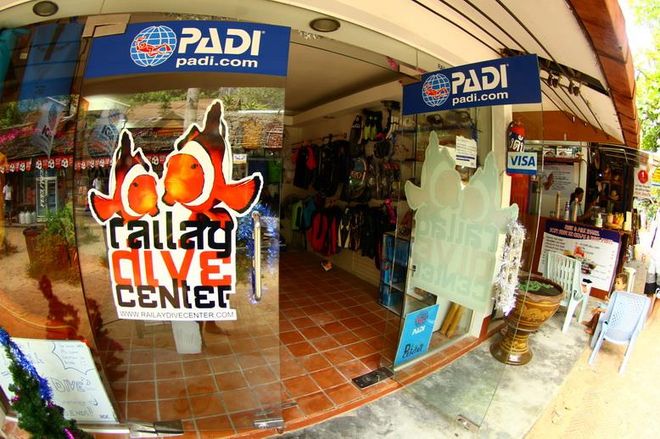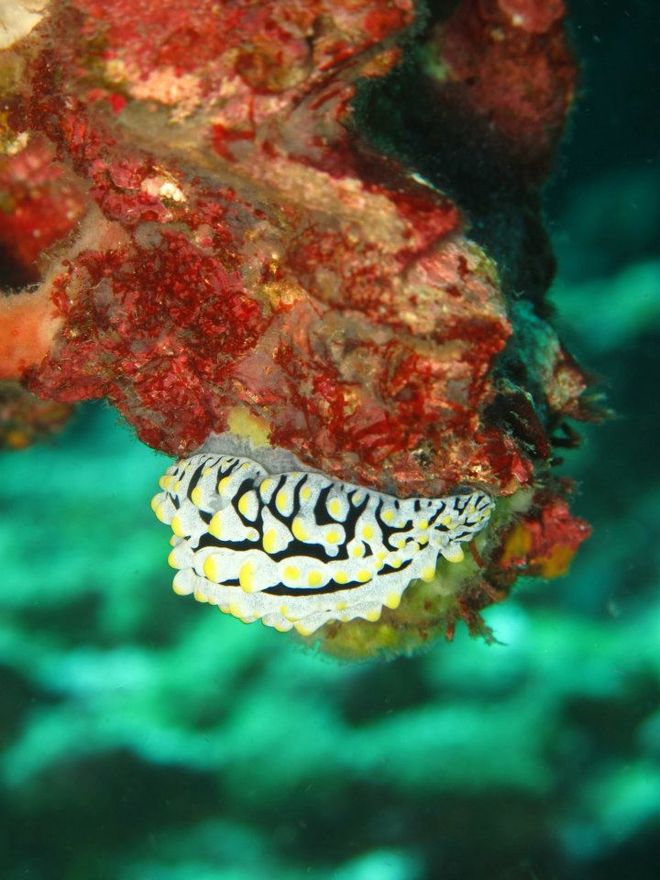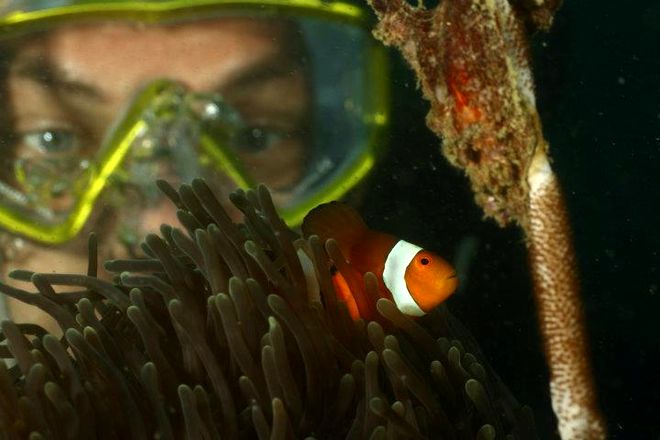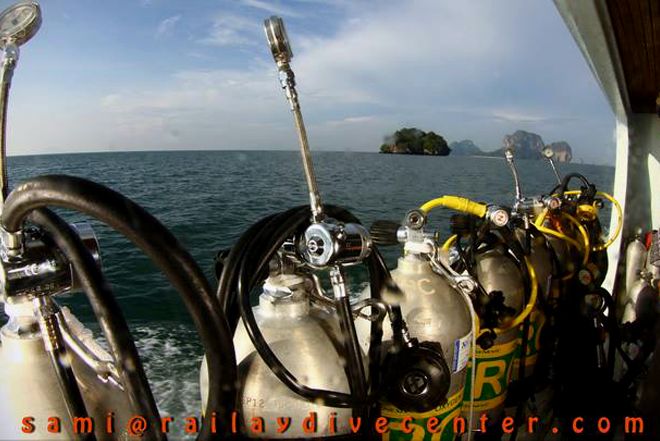Ao Nang: Home to an Unmissable Macro Life

Railay beach is situated near the Ao Nang local archipelago islands that offer plenty of great diving spots. Chicken and Boda islands, offering divers clear visibility and exciting diving terrain, are the most famous of this area. But the rest don't disappoint either - there is a bit of everything - just 30-40 min travel from Ao Nang, there are many great spots with large underwater walls, impressive reefs, beautiful underwater caverns and tunnels, colorful coral gardens and even some wrecks such as the legendary King Cruiser, providing excellent diving opportunities for more experienced divers.


Cruising around King Cruiser. There are actually 2 wrecks on the local islands as well that were sunk just for diving (36m military landing crafts). And the locals have also sunk a new diving wreck in Phi Phi (50m military cargo ship).
The Ao Nang's local islands are some of the easier dives in Thailand due to its fairly shallow sites and therefore best suited for scuba diving courses. Of course, experienced divers will not be bored here either, the caves and tunnels will keep you long occupied, however if you look for a deep diving, look elsewhere. On the other hand, if you are a macro photography "maniac", this is a great site to be at - the marine life in this area is very rich, with probably highest concentration of different marine creatures per square meter in the entire area -, reef fish, seahorses, cuttlefish, barracudas, nemos and even blacktip reef sharks can be seen here, just to name a few. There are many local scuba centers here but if underwater photography is what you came here for, there is probably no better choice than the photo- and eco-friendly Railay Dive Center.

There are many different dive sites around the islands and it's probably hard to choose the best of them all so we asked Sami Vayrynen, who runs the Railay Dive Center, to do the job. To choose top three dive sites in the local islands actually depends very much on what you are in a mood for, but here are a few options:
Koh See (Island number 4) is the furthest out in the local islands and has those impressive cliffs that drop down to 20 meters. Often around the cliffs there are also literally wall of fish - the kind that you cannot see through. Koh See also has a nice cave that makes very nice frames for pictures.


Koh Yawabon is an excellent photo station for "macro-maniacs". There is a wide variety of nudibranches which make great photos. There is also couple of places that the seahorses are found almost every time. For more experienced divers there are couple of caverns/ caves, the longest one almost 90 meters long through the island, ending in a big room sized air pocket.


Koh Talu is probably everyone's favorite. There are swim-throughs and two bigger caves (15 m and 30+ m long) that are always exiting. Sami says he would actually like to do underwater wedding photos in the bigger/shorter cave in Koh Talu. There are also many different creatures found here: 4 different types of Nemos, Seahorses, Stingrays, Bambooshark or two, stick pipefish and different kinds and sizes crustaceans.

"We have been operating for four years and I believe every other dive center in the area has been established for the same reason - love for the underwater environment and passion for diving," Sami replies when asked about the beginnings.

The dive sites around Ao Nang, Krabi are home to some of the best and most varied macro-life you'll find in Thailand today.
"Also, if you think about it, there is hardly a better way of educating people of the importance of the nature and environment than spending some very high quality time together diving in a stunning environment? This same applies to the often unfortunate effects of human activities to the environment- as divers we can go and have a look what happens to discarded garbage or fishing nets etc- they won't just disappear when thrown in the sea and cannot be seen from the surface but most people don't see the damage and therefore don't understand to really care. Ok, a bit preaching there but in a nutshell in my opinion teaching about the environment is an important part in our operations, just as it is to teach people to dive safely or be comfortable (and safe) in and around water," Sami continues.


One of the many popular local dive sites Shark Point is part of a Marine Sanctuary.
"It is a privilege to have the opportunity to bring people to experience the amazing nature of Krabi, both above and under the surface. The leading thought with Railay Dive Center from the very beginning has always been to offer great experiences for great people. We have started very small and we are still small which allows things to be kept flexible and personal. If you dive from a large dive vessel, the whole divesite can be crowded with just that one boat but we are small and we can also go to a site that does not have other boats, so we will always see more marine life than other divers," Sami sums up.


For the next season (2015-2016) Sami and his crew are adding a variety of speedboat trips to further sites in the area mainly for the more experienced divers. The big boat will be operational just as before and will offer a more relaxed pace diving and snorkeling day. If you need info on the whole selection of what this friendly bunch of people offer (Local Islands, Phi Phi, King Cruiser, Koh Haa Yai, Hin Daeng, Private trips etc), visit their website or get in touch.
Photos:© Sami Vayrynen
Source: http://www.railaydivecenter.com








